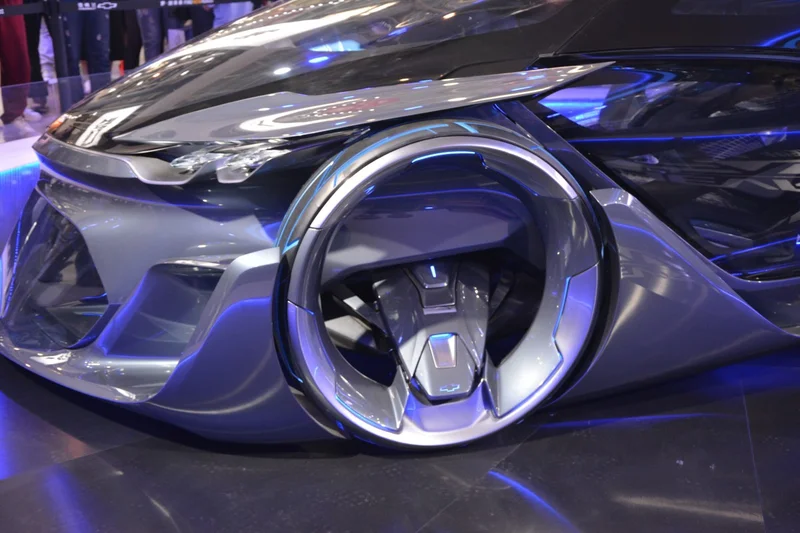The Real Cost of Car Parts: A Data-Driven Breakdown of Online vs. Retail Pricing
An announcement crossed the wire on October 2nd. Renault has initiated the development of a new auto parts purchasing hub in Mexico. According to the official statement, this facility is designed to serve a dual purpose: supplying components to its assembly plants in Brazil and Colombia, and feeding the after-sales spare parts network for the domestic Mexican market. The stated objectives are precisely what one would expect from a corporate logistics initiative—reduce delivery times, improve parts availability, and increase after-sales service efficiency.
On the surface, the logic is sound. A centralized hub in a manufacturing powerhouse like Mexico makes logistical sense for servicing the Latin American corridor. For a Renault owner in Mexico City searching for "car parts near me" or a dealership needing to order replacement car parts, a local supply center is an obvious operational improvement. It promises a more robust pipeline for everything from a simple car battery to complex engine components, theoretically positioning Renault's service centers to better compete with the speed and inventory of dedicated retailers like NAPA or AutoZone.
But my analysis suggests the official narrative, focused on efficiency, is an incomplete one. The real story isn't about optimizing shipping manifests; it's a quiet but significant strategic repositioning driven by geopolitical risk and the hard math of trade law.
An Insurance Policy Disguised as an Investment
The Calculus of Compliance
To understand this move, one must look beyond Renault's press release and examine the trade agreements that govern the hemisphere. The critical variable is not miles or shipping days, but percentages stipulated in treaties like the USMCA and various agreements between Mexico and South American nations. Renault’s decision is fundamentally a response to rules of origin (a key component of these treaties that dictates a minimum percentage of a product must originate from the member countries).
The company itself has noted that many inputs it currently imports from other regions can be replaced by local production in Mexico. This isn't a discovery; it's an admission. For years, the global automotive industry, from the sourcing of Ford parts to the logistics of Toyota car parts, has operated on a model of sourcing from the lowest-cost producer, regardless of location. That model has proven fragile. Renault’s move signals a deliberate shift from a globalized, cost-first strategy to a regionalized, resilience-first strategy. The company is trading the potential for rock-bottom component prices from Asia for the certainty of supply from a proximate, treaty-bound partner.

I've looked at dozens of these strategic realignment announcements over the past five years. The language is always the same—'efficiency,' 'synergy,' 'optimization.' But the underlying data almost always points to a simpler motive: fear. Fear of port closures, sudden tariffs, and the staggering ripple effects of a single container ship getting stuck in a canal. This isn't about making the supply of Honda parts 5% cheaper; it's about ensuring the supply exists at all.
The investment is a hedge. By onshoring the procurement of car parts to Mexico, Renault is paying a premium for predictability. The company must ensure its vehicles meet a regional value content of around 75%—to be more exact, a 75% value content rule under the USMCA—to qualify for tariff-free treatment. Building a purchasing hub in Mexico is less a logistical flourish and more a straightforward way to hit that number. It allows the company to absorb Mexican-made components, from car body parts to electronics, directly into its value chain, satisfying the accountants and the trade lawyers in one go.
Details on the exact capital expenditure for the hub remain scarce, but the strategic cost of not making this move is clear. A failure to comply with rules of origin would result in tariffs that could erase any manufacturing cost advantage. Being dependent on a trans-Pacific supply chain that has repeatedly failed in recent years presents an even greater existential risk to production schedules. When your assembly line in Brazil grinds to a halt because a shipment of microchips is stuck in a port halfway around the world, the cost per unit becomes infinite.
This move isn't happening in a vacuum. The entire industry is making similar calculations. Mexico's competitive advantage is no longer just its labor costs but its geographic and political position. It has become the definitive platform for automakers to de-risk their North and South American operations. Renault is not leading this trend; it is simply, and belatedly, conforming to the new logic of automotive manufacturing. This is about securing the parts of a car so the whole can be built, sold, and serviced predictably.
The Gravity of Proximity
For two decades, the automotive industry chased the lowest possible price tag across the globe. Renault's move signals the end of that era. The new algorithm doesn't optimize for cost; it optimizes for certainty. This isn't an investment in Mexico. It's an insurance policy against the rest of the world.
Reference article source:
Related Articles
The Latest Joshua Allen Death Hoax: What's True and Why This Garbage Keeps Spreading
So I’m trying to track down the details on this Joshua Allen story, and the first thing I hit is a b...
Emma Stone's Plastic Surgery Speculation: An analysis of the photos and the data behind the rumors
The public appearance of a high-value asset always generates data. On September 30, 2025, that asset...
The Internet's Obsession With Julie Andrews: Why Everyone's Asking If She's Still Alive and What Her Legacy Really Is
So, Julie Andrews is 90. Is Julie Andrews still alive? Yeah, she is, and the internet is currently f...
FICO's Latest Scheme Sends Stock Soaring: What It Actually Means and Who Pays the Price
So, FICO is letting mortgage lenders buy its magic numbers directly now. The press release, offcours...
The UK's Pension System Glitch: Why This Critical Flaw Signals a Coming Reboot for Finance
It started, as these things often do, with a whisper. A rumor, carried on the digital wind, that the...
The Unexpected Genius of Corn: Why Its Versatility from Street Corn to Syrup is a Glimpse of the Future
The headlines on Tuesday morning were uniform, and uniformly glum. "Grain prices slumped," they decl...





